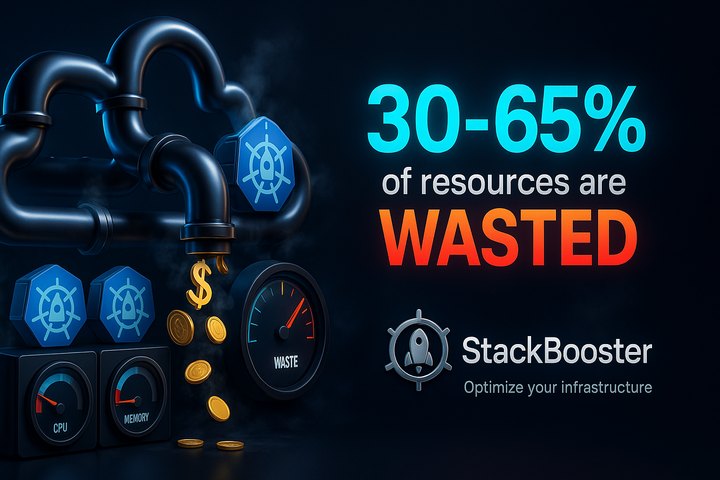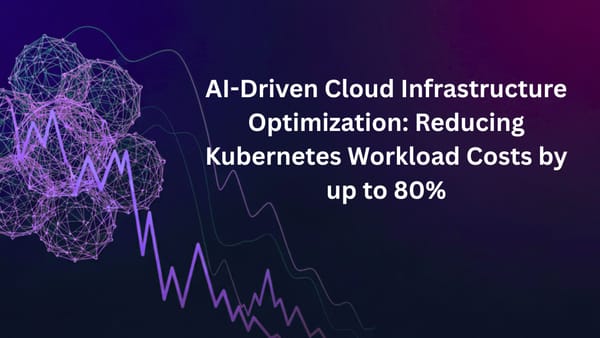Why most Kubernetes clusters waste 30–65% of resources — and what you can do about it

Kubernetes has become the backbone of modern cloud infrastructure — enabling scalability, automation, and resilience at massive scale.
But behind that innovation lies a costly truth: most clusters waste between 30% and 65% of the resources companies pay for.
This isn’t just about cloud bills. It’s about how organizations still manage modern infrastructure with legacy habits and how those habits quietly drain performance, sustainability, and engineering focus.
Let’s explore what’s really driving that waste and how intelligent automation is changing the game.
The real root cause: human-centric systems in a machine-scale world
Most Kubernetes waste doesn’t come from poor technology. It comes from the human logic baked into automation.
When engineers design clusters, they think in terms of safety, predictability, and control, not dynamic optimization. They set high resource limits, maintain idle nodes, and create manual scaling rules because uncertainty feels dangerous. These decisions make sense individually, but collectively, they form a system optimized for peace of mind, not efficiency. At cloud scale, this conservative design philosophy creates compounding inefficiency.
Teams overspend not because they don’t care about cost, but because Kubernetes’ flexibility allows for infinite safety padding.
The hidden cost of overprovisioning
Real-world data consistently shows the same pattern:
Overprovisioning: Developers allocate 2–3× more CPU and memory than workloads actually consume.
Idle Nodes: Clusters run 24/7, even when workloads drop overnight or on weekends.
Manual Scaling: Resource tuning done by hand can’t keep up with constantly changing workloads.
In short, Kubernetes offers endless configuration options, but no one can manually optimize them all in real time. Across large environments, only 35–70% of allocated resources are used. The rest — paid for but idle — quietly drains your cloud budget.
Why observability isn’t optimization
Dashboards, metrics, and alerts are valuable, but they stop at visibility. They show where waste exists, not how to fix it. Teams spend hours reviewing CPU graphs and memory trends, yet each optimization requires a human to intervene. And when hundreds of microservices are interconnected, every manual change risks cascading effects.
That’s why many organizations end up in a cycle of constant awareness, minimal action — a human bottleneck in a machine-scale environment.
The shift toward intelligent automation
The next evolution in Kubernetes management is autonomous optimization — systems that don’t just observe but act.
AI-driven automation transforms efficiency through:
Continuous right-sizing: Pods and nodes adjust dynamically to real-time usage.
Predictive scaling: Systems anticipate workload patterns instead of reacting to thresholds.
Cross-layer coordination: App and node resources stay perfectly aligned.
This isn’t about removing engineers from the loop — it’s about freeing them from repetitive tuning so they can focus on architecture, not micromanagement.
StackBooster is an AI agent for Kubernetes built for this new era of automation. It continuously studies workload behavior and autonomously optimizes app and node performance — cutting costs by up to 80% while improving reliability.
Unlike static dashboards or manual scripts, StackBooster acts as a real-time decision layer — learning from your environment and continuously tuning it for peak performance.
Kubernetes waste isn’t inevitable — it’s the byproduct of systems designed for human caution in a world that runs at machine speed. By embracing intelligent automation, organizations can finally align reliability, efficiency, and cost — reclaiming the full potential of their cloud infrastructure.
Ready to take control of your cloud spending and unlock the full potential of your Kubernetes environment?
Schedule a demo and see how StackBooster turns waste into performance.





